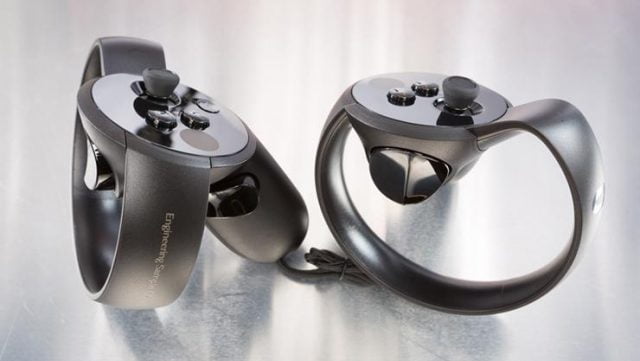
We’ve been tracking the long-term growth of the VR ecosystem on PC thanks to Valve’s monthly Steam Hardware Survey and its reported data. This past summer saw major price cuts from both Oculus and HTC, with the Oculus Rift temporarily on sale with controllers for just $400, and HTC offering the Vive for $600. It took HTC some time to react to Oculus’ move, however, and it wasn’t immediately obvious what kind of gains the company might realize.
We’ve returned to our Steam reports to capture the new data, but this time there’s a wrinkle. Steam appears to have adjusted its ranking methodologies, making it more difficult for us to compare the new data with our previous set.

As of last month (August, since the Steam Hardware Survey is posted one month behind), the HTC Vive had a market share of 0.23 percent, unchanged for months, while the Oculus had leapt to 0.19 percent. Today, the September survey shows the HTC Vive with a 0.19 percent market share, but also claims it has only fallen by 0.01 percent from its previous level. Clearly one of these things is untrue. HTC’s market share either fell 0.04 percent from August to September, or its previous market share values were incorrect and overstated. Either way, Oculus’ major summer discount seems to have goosed its own sales, while HTC’s may or may not have helped the company’s market share.
Ironically, this correction–if that’s what it is–wipes out the previous gains for the VR industry. In July, HTC had a 0.23 percent market share and Oculus had a 0.14 percent market share. The August results show HTC at 0.23 percent and Valve at 0.19 percent. Now September says HTC has fallen to 0.19 percent with HTC falling to 0.18 percent. Given this confusion, the most we can say about the VR market is that Oculus’ deep price cuts may have fueled additional purchases over the summer, while the impact of HTC’s price cuts remains unknown. The most optimistic data we have suggests the PC VR market has grown 1.5 times since this time last year, while the less-optimistic data suggests the market has barely grown at all.
There’s an explanation for this trend that doesn’t require the previous reported market shares to be wrong, however. Right now, VR is more of a novelty than a sustained way to experience gaming. Most of the games that support VR are smaller games and a few indie titles. AAA support isn’t common. Doom and Skyrim are both making the VR leap later this year (Skyrim’s is supposedly terrible, at least at QuakeCon), and we’ve heard rumor of a Fallout 4 VR edition as well, but whether these will be made available to PC and console owners who already own the base game, or how much they’ll cost, isn’t something we know right now.
One potential explanation for the drop in active VR use is people are buying these devices, setting them up, playing with them, and then taking them off and going back to regular gaming. That’s not great, since generally you want people to use the peripherals they’ve purchased if the goal is to build a new gaming ecosystem, but just because someone stopped using a Rift or Vive doesn’t mean they won’t start again if the right game comes out.
Unfortunately, it’s not clear right now just what that ‘right game’ will be. Pricing on the VR editions of Skyrim, Doom, and Fallout will likely determine that, since plenty of people aren’t going to want to pony up to buy a game in VR for the second time unless it offers something truly phenomenal. Of the three, I’d bet on Doom to be the best–Skyrim VR hasn’t gotten good reports and Fallout 4, while fun, isn’t nearly as good of a game as Doom.
I may take some heat for that last, so allow me to elaborate. There’s a lot of things I really loved about Fallout 4, but as I’ve written before, it’s not a good RPG. Playing it often feels like playing the beta of an amazing game that wants to delve into complex questions of consciousness, morality, and the difference (or lack of difference) between AI and ordinary human consciousness, but forgot to implement most of the content that would actually allow for that. Left to rely on its gameplay and sense of scope, FO4 is pretty good. It’s fun, it’s pretty, and it has a lot of varied locations to get lost in and/or explore.

Artist’s depiction. Blendtec-brand DOOMJUICE may contain no actual demon flavor. Void where prohibited, see store for details.
Doom’s plot, of course, basically boils down to “You’re an insane, vengeance-driven, immortal space marine who drinks demons for breakfast after grinding them up in his BLENDTEC 9000.” Fallout 4’s story may be thin, but it features critical achievements like “More than two named characters,” “Locations that aren’t Mars and/or Hell,” and “Unkillable traders who will stalk you for the rest of the game.” Granted, I’m pretty sure that last one is a bug, but let’s just say Fallout 4 has a thicker plot, even if it’s not muchthicker. Doom, on the other hand, has a gorgeous graphics engine that can sustain a playable framerate on any modern GPU. AMD and Nvidia have historically traded shots in games where one company or the other was saddled with high frame latencies or low frame rates, but that’s not the case with id’s blasterpiece. One card may be faster than the other, but anyone with decent midrange hardware can enjoy the game.
Hopefully we’ll see some real movement in the PC VR space before too long. If we don’t see an uptick in virtual reality sales over the holidays, expect to see a lot more think-pieces about how the industry isn’t meeting expectations and could be headed for a downturn.
[“Source-extremetech”]










